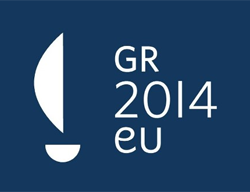Agriculture
The legal basis of the Common Agricultural policy are Articles 32 to 38 of the Treaty establishing the European Community.
The aim of the common agricultural policy is to provide farmers with a reasonable standard of living and consumers with quality food at fair prices. The way these aims are met has changed over the years. Food safety, preservation of the rural environment and value for money are now all key concepts.
Moving with the times
Born 50 years ago when the founder members of the EU had not long emerged from a decade or more of food shortages, the Common Agricultural Policy (CAP) began by subsidising production of basic foodstuffs in the interests of self-sufficiency. The CAP of today, on the other hand, emphasises direct payments to farmers as the best way of guaranteeing farm incomes, food safety and quality, and environmentally sustainable production.
The change of emphasis began some years ago after the policy of self-sufficiency in key foodstuffs at all times began to produce excessive surpluses. Beef and butter mountains, milk and wine lakes are now a thing of the past as a result of changes well over a decade ago to make the CAP more cost-effective. The CAP once accounted for nearly 70% of the EU budget. Now it takes well under half as the EU has expanded other policies and curbed CAP spending. At the same time, the range of activities funded from the budget for agriculture has expanded to include rural development and the environment.
Worries about the cost of the CAP and fewer fears about food security were not the only drivers of change. As agriculture modernised and the EU economy became more service-oriented, the number of people working on the land dropped to 7% now compared to more than 20% half a century ago. Even though 10.4 million people still work in agriculture and more than 40% of the area of the EU is used for agriculture, survival of rural economies can no longer be taken for granted.
Radical reform
Major reforms agreed in mid-2003 are now being implemented. Subsidies for production are largely disappearing and being replaced by direct payments to farmers. These payments are conditional on compliance with environmental, food safety, animal and plant health, and animal welfare standards, as well as on keeping farmland in good condition, both for farming and in terms of preservation of the country side. The reforms are continuing, embracing products not included in the first wave in 2003. These include cotton, hops, olive oil, tobacco and sugar.
Changing the way EU farming is funded also addresses accusations that the CAP distorts world trade (e.g. through subsidies on exports of surplus foodstuffs). The most recent reforms reduced forms of farm support which distort trade by 70%. They prepared the EU for the ‘Doha’ round of international trade liberalisation talks, where an offer by the EU to eliminate export subsidies altogether is on the table, but conditional on other major trading countries doing the same. However, even without further liberalisation, the EU is already the world’s largest importer of food and the biggest market for Third World foodstuffs.
Addressing consumer concerns
The CAP is not just about guaranteeing a fair living for farmers. Consumers are entitled to food which is safe and of high quality. So the EU strives to ensure high standards of animal welfare, and of hygiene through the food chain from farm to fork. In addition, the EU promotes the production of quality – and internationally competitive - foodstuffs. These include labels to designate foodstuffs coming entirely from one area of the EU using recognised know-how, for well-known foods with a clear geographic tie to a certain part of the EU, foods made of traditional ingredients or using traditional methods and a label for organic foods.
The EU not only has rules defining organic foods, but also on what constitutes an organic farm. Recognising the importance consumers now attach to organic foods, it is promoting this type of farming.






 Svejo
Svejo Twitter
Twitter Link4e
Link4e Pipe
Pipe Web-bg
Web-bg Bghot
Bghot Lubimi
Lubimi Novinitednes
Novinitednes Ping
Ping Facebook
Facebook Myspace
Myspace Mix
Mix Del.ico.us
Del.ico.us Reddit
Reddit Digg
Digg Stumbleupon
Stumbleupon Myweb Yahoo
Myweb Yahoo Google Bookmarks
Google Bookmarks Google Buzz
Google Buzz

